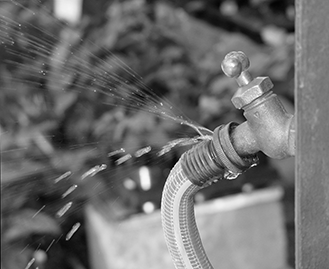Gas Fitters with Great Abilities: You Can Discover New Professionals Available
Safe
operation requires gas leak detection in transmission pipelines. The risks to
people, property, and the environment from a lack of early detection are
substantial. Natural gas, a fossil fuel found deep within the Earth, has many
practical uses. In addition to being burned in power plants and automobile fuel
tanks, wood may be utilised in a wide variety of other heating and lighting
applications.
Pipelines
for the transportation of natural gas and oil are the most reliable and
cost-effective option. These networks are built to strict specifications to
assure their security, dependability, and efficacy. No leaks will occur in
these pipelines if they are well-maintained, although corrosion and accidents
are two potential causes of leakage. With the help of Gas Leak Detection Hawthorn service
you can take control of any emergency at a very early stage.
Gas Leaks Pose Serious Health Risks
Leaks
of natural gas are difficult to detect because the gas has no discernible
colour or odour. Headache, nausea, dizziness, exhaustion, breathing
difficulties, and irritation of the eyes and throat are all indications of
inhalation exposure.
Losses
of consciousness, incoordination, and death by asphyxia have all been linked to
exposure to toxic quantities of gas. Because of the potential danger to plant
personnel and adjacent communities, early detection of gas leaks is crucial.
Gas Leaks and Their Effects on the Environment
Methane
leaks from plants, stations, and pipelines account for about 1.70–1.80 million
metric tonnes of annual loss, although they can be mitigated with cutting-edge
technology and rigors testing techniques. Even a minor gas leak can lose a
vital energy source and eventually build up to an explosive concentration. Gas
leaks pose an explosive hazard, can start fires, and contribute to global
warming by releasing toxic glass house gases into the environment.
Methane
leakage is a potential hazard associated with the drilling, extraction, and
transportation of natural gas. Over a 100-year time frame, methane is 34 times
more powerful than carbon dioxide at trapping heat. So, after 20 years, it's 86
times more powerful than before.
The Environment Depends On Quick Gas Leak Detection
Pipeline
systems age and deteriorate in a linear fashion. When this occurs, corrosion
can set in, leading to an increased risk of breakdown. Natural gas leaks into
the air via fatigue cracking, creating health issues and environmental damage.
The
detrimental effects of methane on human health and the environment can be
mitigated through early gas leak detection. However, because pipeline networks
span such vast distances, keeping an eye out for gas leaks is no easy task. The
problem of gas leaks is never-ending, but it may be tracked with the help of
maps. Regularly updated leak and repair maps are available. When a new leak is
discovered, immediate action must be done by Gas Fitting and
LPG Hawthorn professionals
to avoid the accumulation of the dangerous gases.
Conclusion
Over
the past few decades, and especially over the past decade, the natural gas
business has expanded at an astounding rate. Natural gas production is expected
to increase more in the decades to come because it is a fossil fuel that poses
fewer safety concerns than others. Don't be fooled by this gas's apparent lack
of danger, though; it has only a ‘relatively harmless' reputation. The leak
detection sensor is cutting edge equipment for identifying a wide variety of
potentially harmful gases. It's a potent weapon for keeping your workplace
safe.

Comments
Post a Comment